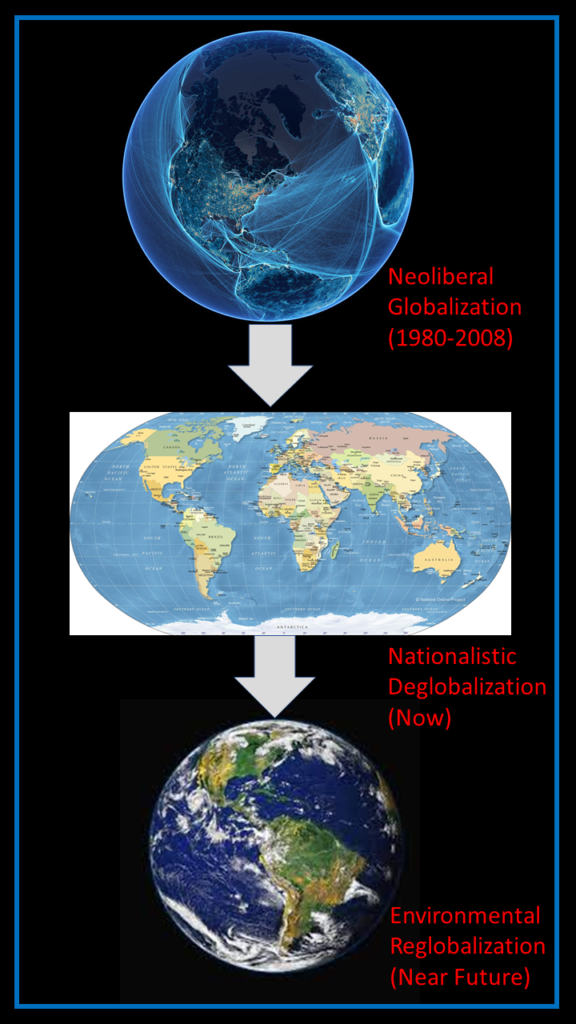David P. Turner / April 3, 2024
A surprising outcome emerged from the March meeting of the Subcommission on Quaternary Stratigraphy (within the International Union of Geological Sciences). The surprise came in the form of a vote regarding the official status of the Anthropocene concept, with a majority of the subcommission members voting against a proposal to identify the Anthropocene as a new geological epoch.
The term Anthropocene was originally inspired by the observation that the impacts of the human enterprise on Earth’s environment ̶ notably a rise in the atmospheric CO2 concentration ̶ have begun to rival those of the background geologic forces. Since divisions of the geologic time scale are generally associated with major changes in the global environment, naming a new epoch was a reasonable suggestion.
The formal proposal to do so came from the multidisciplinary Anthropocene Working Group (AWG), which has deliberated on the issue for the last 14 years. The AWG proposal specified that the Anthropocene be named a new epoch, with a beginning point in the early 1950s. Its stratigraphic marker was to be a layer of chemical residues from post-World War II nuclear weapons testing.
The Vote
The vote against designating the Anthropocene as a new Epoch was a surprise because the proposal had been made with a strong scientific foundation and had a lot of support. The decision against the proposal was not because the Anthropocene is geologically insignificant, but rather because the Anthropocene concept is highly significant to many disciplines besides geology. In the last 20 years, the concept has received widespread attention in both academia and popular media. Indeed, the term has taken on a life of its own, a life outside the staid world of Quaternary Stratigraphy.
The term Anthropocene has come to signify a rupture in human history ̶ the end of a time when the biophysical environment was mostly a background to the march of human progress. The rupture is evident from a suite of global indicators, ranging from oil consumption to the rate of deforestation, that all began rising dramatically in the last 100 years. The word Anthropocene now has broad cultural significance; it implies that humanity has acquired a new responsibility to self-regulate, or face its own demise from a self-induced inhospitable environment.
The negative vote within the subcommission was also based on a more technical issue about whether, considering that humans have been altering the environment at many scales for many thousands of years, the beginning of the Anthropocene Epoch could be narrowed down to the early 1950s.
An alternative proposal, with considerable cross-disciplinary support, is to designate the Anthropocene a geologic “event”. This term is used in the geosciences to reference a wide variety of Earth system changes or transformations. Designating something as an event does not require the kind of formal approval process associated with designating an epoch.
The Scope of the Anthropocene Event
Despite this quasi-downgrade to Event status, the Anthropocene has really just begun and will ultimately have a massive impact on the Earth system. The Anthropocene Event, as we will call it here, will eventually push the global mean temperature up 2-3 oC or more, a range associated with the early Pliocene Epoch 3-5 million years ago (Figure 1). Because of human influences on the atmosphere, Earth may well miss its next scheduled glacial period (as prescribed by the Milankovitch solar forcings).

Figure 1. The geologic record of global mean temperature, with projections to 2100. The x-axis units differ by panel. The graphic is adapted from work by Glen Fergus.
What is also quite extraordinary is that the Anthropocene Event is concurrent with the origin of a whole new Earth system sphere – the technosphere. This term refers to the accumulation of human artifacts ̶ including buildings, transportation networks, and communication infrastructure ̶ that now cloaks the surface of the Earth.
From an Earth system science perspective, the parts of the Earth system are its spheres, i.e. the lithosphere, atmosphere, hydrosphere, cryosphere and biosphere interact with each other over geological time to determine the state and dynamics of the Earth system.
The biosphere (defined by geochemists as the sum of all life on Earth) is of particular interest here. The biosphere did not exist early in Earth’s history, but after the origin of life and its proliferation around the planet, the impacts of the biosphere on Earth’s energy flow and chemical cycling became profound (e.g. the oxygenation of the atmosphere).
Now the technosphere, a product of human history, has joined the biosphere as an active force on the surface of the planet. Like the biosphere, it has mass and uses energy to maintain itself and grow. It has become a significant factor in the global biogeochemical cycles. Unlike the biosphere, the technosphere has not been around long enough to become well integrated with the rest of the Earth system, e.g. it largely does not recycle its own waste.
During the Anthropocene Event, the technosphere could be destroyed or self-destruct by various mechanisms, or could come into a stable state of sorts with the rest of the Earth system, in which case it might last quite a long while.
The Role of the Anthropocene Event in Cultural Evolution
Transition to global sustainability will require the emergence and evolution of a global culture, i.e. a globally shared set of beliefs and practices. The Anthropocene Event is a concept that can help anchor a robust integration of human history and Earth history.
Transdisciplinary investigations covering a wide range of issues associated with managing the human enterprise on Earth ̶ including aspects of the social sciences, humanities, and biophysical sciences ̶ may hinge on having this shared reference point.
The Right Call
In light of the need for broadly unifying concepts related to global environmental change, I think the geologists made the right call. The Anthropocene has become a politically potent idea and deserves the widest possible attention in the domains of scholarship, education, entertainment, and advocacy.










